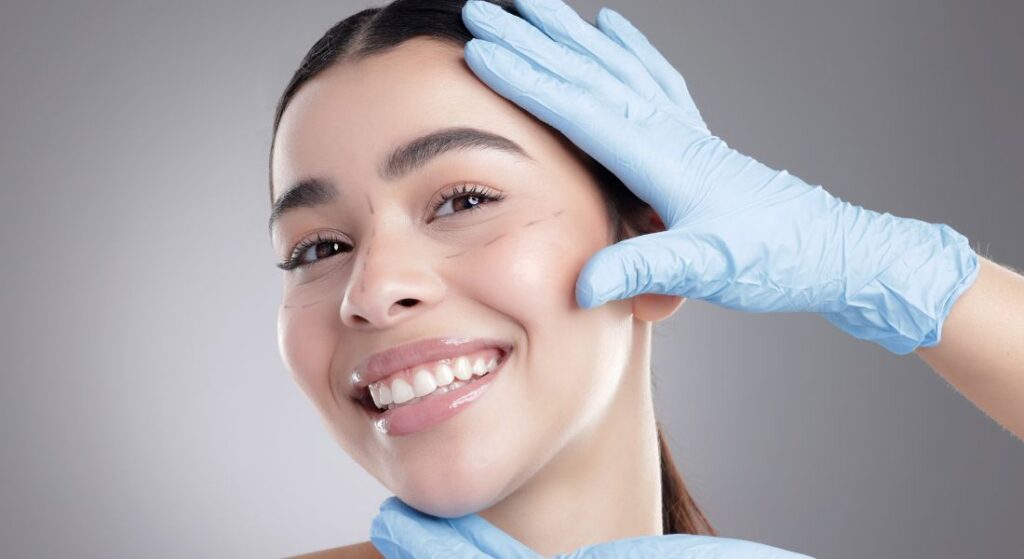
If you’ve been exploring ways to refresh your appearance and maintain a youthful look, there’s a good chance you’ve come across both dermal fillers and Sculptra. At first glance, they might seem pretty similar after all, both are designed to add volume, smooth out wrinkles, and help you look more vibrant.
So, you might be wondering: is Sculptra better than fillers? The truth is, it really depends on a few things. What are your personal goals? Are you looking for quick, immediate results, or do you prefer a more gradual, natural-looking transformation? How long do you want the effects to last? Answering these questions can make a huge difference in deciding which option fits you best.
In this article, I’ll walk you through the key differences between Sculptra and traditional dermal fillers, what you can realistically expect from each, and the factors to consider when choosing the treatment that’s most suited to your needs. By the end, you’ll have a clearer idea of which approach might be the perfect fit for helping you look and feel your best.
Before we dive into the specifics, it’s helpful to understand a little about how these treatments actually work. Traditional dermal fillers are usually made from substances like hyaluronic acid, which instantly plumps up the skin and fills in lines or hollows. Sculptra, on the other hand, works differently it stimulates your body’s own collagen production over time, gradually restoring volume and firmness in a more natural-looking way.
What Are Dermal Fillers?

Dermal fillers are injectable gels that help restore lost volume, smooth out wrinkles, and enhance your natural facial features. The most common type is made from hyaluronic acid (HA), a substance that naturally occurs in your skin. HA plays a key role in keeping your skin hydrated, soft, and plump, which is why it works so well as a filler.
People use dermal fillers for a variety of treatments, depending on the look they want to achieve. Some choose fillers to enhance their lips, giving them a fuller, more defined appearance that still looks natural. Others focus on lifting and contouring their cheeks to restore a youthful shape, or to define their jawline for a sharper, more sculpted profile. Fillers are also commonly used to soften deep lines around the mouth, like nasolabial folds, and to brighten tired-looking eyes by correcting the under-eye area.
With fillers, you’ll see an instant boost—your lips, cheeks, or jawline look plumper and more defined right away. It’s a quick pick-me-up that lets you walk out of the clinic feeling confident, without waiting weeks to see results.
Another benefit is the versatility of fillers. The amount injected can be adjusted to achieve subtle enhancements or more noticeable improvements, depending on the results you want.
What Is Sculptra?

Sculptra is also an injectable treatment, but it works in a completely different way from traditional dermal fillers. Instead of instantly filling lines or adding volume, Sculptra acts as a biostimulator. Its active ingredient, poly-L-lactic acid (PLLA), gently encourages your body to produce more of its own collagen over time.
This process makes Sculptra particularly effective for gradually restoring facial volume, smoothing deep wrinkles and folds, and rebuilding areas of your face that have lost structure due to ageing. Because it works with your body, you’ll see a natural improvement over time, the results tend to look very natural and develop slowly rather than appearing all at once.
With Sculptra, you’ll start noticing subtle changes over a few weeks. Your skin gradually regains volume and smoothness, giving you a refreshed, natural look that keeps improving over the next few months. It’s like your younger-looking self is slowly coming back—without anyone noticing you had a treatment.
Many people choose Sculptra when they want a long-lasting, natural-looking lift rather than an instant “filled-in” appearance. It works gradually, but you’ll love how natural and long-lasting the results are compared to traditional fillers.
The Key Differences Between Sculptra and Fillers
If you are trying to decide between Sculptra and traditional dermal fillers, it helps to understand how they differ in a few key areas. One of the biggest differences is the speed of results. With fillers, you get almost instant changes the moment the injection is done, you can see the improvement. Sculptra, on the other hand, works gradually. The changes appear over weeks or even months as your body naturally produces more collagen.
Another important difference is how long the results last. Fillers typically last anywhere from six months to a year and a half, depending on the type and the area treated. Sculptra tends to last much longer, often two to three years, because it stimulates your own collagen to create lasting volume and structure.
The areas where each treatment works best also vary. Fillers are ideal for precise enhancements, like defining the lips or softening small lines. Sculptra is better suited for larger areas where you want overall volume restoration, such as the cheeks, temples, or areas of the face that have lost structure over time.
Finally, the look and feel of the results can differ. Fillers add volume directly, which is great for immediate plumping but can sometimes appear less natural if too much is used. Sculptra, because it gradually builds your own collagen, tends to create subtle, natural-looking changes that blend seamlessly with your existing facial structure.
Which One Is Right for You?

Deciding between dermal fillers and Sculptra really comes down to your personal goals and what you want to achieve. If you’re looking for instant results for a special occasion or want to enhance a specific feature like your lips or jawline, dermal fillers are often the best choice. They’re perfect if you don’t mind having touch-ups once or twice a year to maintain your look.
Sculptra, on the other hand, is ideal if you’re happy to wait a few months for results to gradually develop. It’s great for creating a natural, subtle lift that doesn’t look “overdone,” and it’s particularly appealing if you’re looking for longer-lasting effects with fewer treatments over time.
For many people, the ideal approach isn’t choosing one over the other but combining the two. Using fillers for precise touch-ups and Sculptra for overall facial structure and collagen support can give you the best of both worlds immediate enhancements alongside natural, long-term improvements.
Safety and Side Effects
Both Sculptra and dermal fillers are generally considered safe when they’re administered by an experienced medical professional. That said, like any injectable treatment, they do come with some potential side effects.
With fillers, you might notice mild swelling, bruising, or tenderness at the injection site. These usually settle within a few days. Rarely, more serious complications can occur, such as lumps or issues with blood flow, which is why it’s so important to have the procedure done by a skilled injector.
Sculptra can also cause temporary swelling, redness, or small bumps under the skin. These effects typically resolve on their own as your collagen gradually builds. Because the treatment works over time, any minor irregularities usually smooth out naturally.
The most important factor for safety is choosing a qualified, experienced practitioner. Someone who understands facial anatomy and can tailor the treatment to your needs will help ensure the best, safest results.
How Many Treatments Do You Need?
When it comes to dermal fillers, most people can achieve their desired results in just one session. That’s part of their appeal you get immediate improvements with minimal downtime. However, to maintain the look, you’ll usually need touch-ups every six to eighteen months, depending on the type of filler and the area treated.
Sculptra works a bit differently. Because it gradually stimulates your body’s collagen production, you’ll typically need a series of two to three sessions spaced a few weeks apart. Once the treatment course is complete, the results can last up to two to three years, making it a longer-term investment in your skin’s natural support.
So, while fillers give you quick, visible results, Sculptra is more of a slow-building, lasting solution. Many people actually combine both approaches to enjoy immediate enhancements alongside gradual, long-term improvements.
Cost Considerations
The cost of both dermal fillers and Sculptra depends on a few factors, including the amount of product needed, the areas being treated, and the clinic you choose.
Dermal fillers usually have a lower upfront cost, which makes them appealing if you want quick results. However, because they typically last six to eighteen months, you’ll need more frequent top-ups, which can add up over time.
Sculptra, on the other hand, has a higher initial cost. But because the results last much longer often two to three years you’ll need fewer treatments overall.
When you think about it in the long term, Sculptra can often be more cost-effective, especially if you’re looking for durable, natural-looking results that gradually improve your skin’s structure.
The Confidence Factor
Both dermal fillers and Sculptra can give you a real confidence boost, helping you feel more refreshed and youthful. The choice between the two often comes down to whether you prefer a quick transformation or a more gradual, natural improvement.
Fillers are perfect if you want to walk out of the clinic looking instantly rejuvenated. They give immediate results that can brighten your face and enhance your features right away.
Sculptra is perfect if you want to look younger or healthier, without anyone noticing exactly why. The changes happen gradually, so your refreshed look develops naturally over time.
Ultimately, the most important thing is finding a treatment plan that’s tailored to your face and your goals. Working with an experienced injector who understands your needs can make all the difference in achieving results that look and feel right for you.
Frequently Asked Questions:
1. Who makes a good candidate for dermal fillers?
You’re a good candidate for dermal fillers if you want instant facial enhancement and are focused on specific areas like your lips, cheeks, or jawline. Fillers are excellent for smoothing moderate wrinkles, adding volume where it’s been lost, or enhancing contours that aren’t as defined. Ideally, you have realistic expectations—you should understand that fillers temporarily enhance your natural features and need periodic top-ups to maintain results. If you’re healthy, with no active skin infections or allergies to filler ingredients, you’re likely a candidate.
2. Who makes a good candidate for Sculptra on the cheeks and temples?
Sculptra is for you if you’re looking for a gradual, natural improvement rather than an instant change. It’s ideal if you’ve noticed overall facial volume loss, deepening wrinkles, or a change in your facial structure with age. Sculptra doesn’t just fill; it stimulates your own collagen production, which means results develop subtly over months. This makes it perfect if you want people to notice your youthful glow without being able to tell you’ve had treatment. If patience isn’t an issue and you’re committed to longer-lasting results, Sculptra could be the better choice.
3. Which areas of your face respond best to fillers versus Sculptra?
Many people actually get the best of both worlds by combining these treatments. You can use fillers to target specific areas that need immediate enhancement, like your lips, under-eye hollows, or nasolabial folds. At the same time, Sculptra can restore overall facial volume and support collagen for longer-lasting improvement. Combining the two allows you to walk out of the clinic looking refreshed instantly while enjoying subtle, long-term benefits that evolve naturally. Your injector will guide you on timing and placement for optimal results.
4. How long do results last with fillers and Sculptra?
If you’re looking for a quick fix, fillers deliver results immediately, but these typically last 6–18 months, depending on the area treated and the type of filler used. Sculptra is more of a long-term investment. It takes a few months for your body to produce collagen, but once it does, results can last up to 2–3 years. If you’re someone who prefers fewer clinic visits and long-lasting change, Sculptra might be more convenient and cost-effective over time.
5. Will Sculptra or fillers look natural?
Both treatments can look natural, but it depends on technique and your goals. Fillers provide immediate volume, so if too much is added, it can sometimes appear less subtle. Sculptra works differently—it gradually improves facial structure as your collagen builds, blending seamlessly with your natural features. If you want results that are noticeable but still subtle enough to not “look done,” Sculptra often provides a more natural, soft enhancement over time.
6. Are the treatments painful?
You may feel some mild discomfort during injections, but both treatments are generally well-tolerated. Many clinics use numbing creams or local anaesthetic to minimise pain. After treatment, mild swelling, redness, or tenderness can occur, but this usually resolves in a few days. If you have sensitive skin, discuss pain management with your injector beforehand—your comfort is important.
7. How many sessions will I need?
For fillers, you usually get the look you want in just one session, and touch-ups every 6–18 months keep it fresh. Sculptra takes a bit more patience—a few sessions spaced a month apart—but the results build gradually and naturally, giving you a subtle transformation that fits into your routine with minimal disruption. Your provider will guide you every step, so you feel confident and comfortable throughout the process.
8. Are there any side effects I should worry about?
Side effects for both treatments are typically mild and temporary. With fillers, you might notice minor swelling, bruising, or tenderness at the injection site. Rare complications, like lumps or vascular issues, are uncommon but possible if not injected correctly. Sculptra may cause small bumps under the skin, mild redness, or swelling, which usually resolve as your collagen develops.
9. Can I return to normal activities immediately?
Yes! For both fillers and Sculptra, you can usually resume most daily activities right away. It’s best to avoid intense exercise, alcohol, or heat exposure for 24–48 hours, as these can worsen swelling or bruising. Your injector will provide specific aftercare instructions tailored to your treatment area. If you have social events, planning ahead ensures any mild swelling has settled.
10. How do I decide which treatment is right for me?
Think about what matters most to you. If you want instant results for a specific feature or event, fillers are a great choice. If you prefer gradual, long-lasting improvement with a natural effect, Sculptra may be better. Many people find a combination works best. A consultation with an experienced provider like Dr Ayham Al-Ayoubi can help you choose the right treatment or combination for your facial goals, ensuring the plan is tailored to your skin, anatomy, and lifestyle.
Final Thoughts: Choosing the Right Treatment for You
When it comes to Sculptra versus fillers, the question isn’t so much which one is “better,” but which one is better for you. Fillers give you immediate results and are perfect for precise enhancements, while Sculptra works more gradually to rebuild your collagen and deliver long-lasting, natural improvements.
At the London Medical & Aesthetic Clinic, you’ll be treated by Dr Ayham Al-Ayoubi, a world-leading expert in advanced injectables and aesthetic medicine. His precision and expertise mean your treatment will be tailored to your needs, whether that involves fillers, Sculptra, or a combination of both.
If you’re considering Sculptra in London, you can book a consultation with Dr Al-Ayoubi to explore your options and find the best way to achieve a refreshed, natural-looking result that lasts.
References
1. Fabi, S., Hamilton, T., LaTowsky, B., et al. (2024). Effectiveness and Safety of Sculptra Poly-L-Lactic Acid Injectable Implant in the Correction of Cheek Wrinkles. Journal of Drugs in Dermatology, 23(1), 1297–1305 https://pubmed.ncbi.nlm.nih.gov/38206151/
2. “Application of PLLA (Poly-L-Lactic acid) for Rejuvenation and Facial Volumization.” PMC (National Institutes of Health / NCBI). (Accessed via PubMed Central) review article discussing clinical uses of PLLA including Sculptra. https://pmc.ncbi.nlm.nih.gov/articles/PMC10939544/
3. “Efficacy and Safety of Poly-L-Lactic Acid in Facial Aesthetics: A Systematic Review.” Polymers (Basel), 2024, 16(18), 2564. includes data on PLLA-SCA (Sculptra) in clinical trials. https://www.mdpi.com/2073-4360/16/18/2564
4. “Advances in Poly-l-Lactic Acid Injections for Facial and Neck” PRS Global Open (Plastic and Reconstructive Surgery Global Open) discusses recent clinical evidence on Sculptra (PLLA) including duration, safety, methods. https://journals.lww.com/prsgo/fulltext/2025/08000/advances_in_poly_l_lactic_acid_injections_for.25.aspx
5. “Comprehensive Systematic Review of Poly-L-Lactic Acid in Facial Clinical Application.” Aesthetic Plastic Surgery (Springer) in this review, many of the clinical outcomes referenced are for PLLA-SCA (Sculptra) specifically. https://link.springer.com/article/10.1007/s00266-025-05030-4





